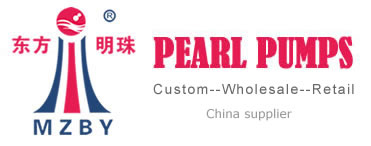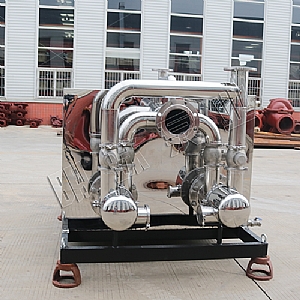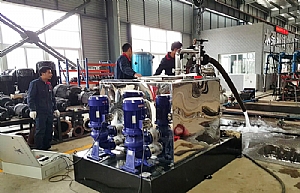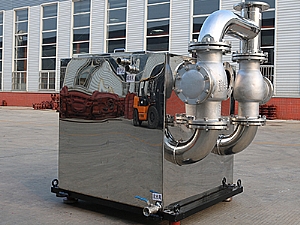What is a sewage lift system?
The Essentials of a Sewage Lift System
In the realm of modern plumbing and wastewater management, the sewage lift system plays a crucial role in ensuring the smooth and efficient transportation of wastewater from lower to higher levels. This system is particularly vital in buildings with multiple stories or in areas where gravity-based drainage is not feasible. Understanding the fundamentals of a sewage lift system is essential for any engineer, architect, or homeowner seeking to install or maintain such a system.
Definition and Working Principles
A sewage lift system, also known as a sewage ejector system, is a combination of pumps, tanks, pipes, valves, and control devices designed to transport wastewater from areas below the main drainage line to a higher-level disposal point. The system typically consists of a collection tank, which receives wastewater from fixtures such as toilets, sinks, and showers, and a pump that is activated when the water level in the tank reaches a predetermined point.
The working principle of a sewage lift system is relatively simple. Wastewater enters the collection tank through inlet pipes. As the water level rises, a float switch or other level-sensing device triggers the pump to activate. The pump then forces the wastewater through discharge pipes to a higher-level drain or septic tank. Once the water level in the tank drops below a certain point, the pump shuts off, and the system is ready for the next cycle.
Components of a Sewage Lift System
Collection Tank
The collection tank is the heart of the sewage lift system. It is designed to hold wastewater temporarily until the pump can discharge it. The tank is typically made of durable, corrosion-resistant materials and features an inlet for receiving wastewater and an outlet for the pump.
Pump
The pump is the powerhouse of the system, responsible for propelling the wastewater from the collection tank to the discharge point. Sewage lift pumps are typically submersible, meaning they are designed to operate while fully immersed in water. These pumps are powerful enough to handle the solids and debris that may be present in wastewater.
Control Devices
Control devices, such as float switches or pressure sensors, monitor the water level in the collection tank and activate the pump when necessary. These devices ensure that the pump operates only when required, reducing energy consumption and wear and tear on the pump.
Inlet and Discharge Pipes
Inlet pipes carry wastewater from fixtures to the collection tank, while discharge pipes transport the wastewater from the tank to the higher-level drain or septic tank. These pipes must be properly sized and installed to ensure efficient flow and prevent clogs or backups.
Accessories and Features
Additional accessories and features, such as alarms, backup pumps, and ventilation systems, may be included in a sewage lift system to provide enhanced performance and reliability.
Applications and Benefits
Sewage lift systems are commonly used in a variety of applications, including:
Multi-story buildings
In buildings with multiple stories, gravity-based drainage may not be feasible due to the height of the building. Sewage lift systems allow wastewater to be transported from lower levels to a higher-level drain or septic tank.
Basements and below-grade spaces
Basements and other below-grade spaces often have fixtures that need to discharge wastewater to a higher-level drain. Sewage lift systems provide an effective solution for these situations.
Remote or inaccessible areas
In areas where access to gravity-based drainage is difficult or impossible, such as on islands or in mountainous regions, sewage lift systems offer a viable option for wastewater management.
The benefits of using a sewage lift system include:
Efficient wastewater transportation
Sewage lift systems efficiently transport wastewater from lower to higher levels, ensuring that fixtures can be used properly and wastewater is disposed of safely.
Reduced risk of backups and overflows
By using a pump to force wastewater through pipes, sewage lift systems reduce the risk of backups and overflows that can occur with gravity-based systems.
Flexibility in design and installation
Sewage lift systems can be customized to meet the specific needs of a project, allowing for greater flexibility in design and installation.
Ease of maintenance and repair
Many sewage lift systems feature access ports and inspection points that allow for easy maintenance and repair, reducing the risk of downtime and costly repairs.
PEARL Pump: Your Trusted Partner for Customized Sewage Lift Systems
PEARL Pump, a leading supplier of sewage lift equipment in China, offers a comprehensive range of customized solutions to meet the unique needs of each project. With a focus on quality, reliability, and customer satisfaction, PEARL Pump provides a wide range of pumps, tanks, control devices, and accessories to create tailored sewage lift systems
- Water pump models and their meanings[ 2024-01-26 ]
- What is the difference between magnetic pump and centrifugal pump?[ 2024-04-29 ]
- What is the difference between a centrifugal pump and a screw pump?[ 2024-04-26 ]
- How does a self priming pump work?[ 2024-04-15 ]
- Do I need a sewage pump or sump pump?[ 2024-04-09 ]
- What does a diesel water pump do?[ 2024-05-10 ]
- How to make a simple vacuum pump?[ 2024-05-01 ]
- What are the different types of water systems in buildings?[ 2024-04-10 ]
- How do you treat a private water supply?[ 2024-04-10 ]
- Can a diaphragm pump pull a vacuum?[ 2024-04-29 ]







